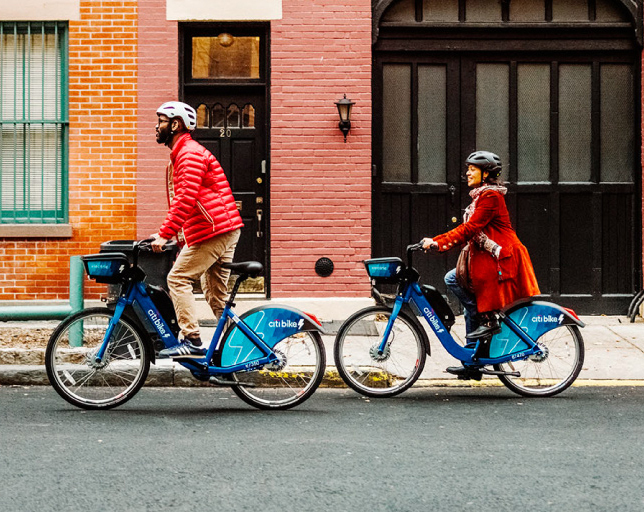The Citi Bike surge has ended — but with millions of New Yorkers no longer commuting, the fact that the Lyft-owned bike share network is still serving tens of thousands of people a day suggests that people are still choosing bicycles to get around.

Last week, after Mayor de Blasio urged people to use bikes during the coronavirus crisis, Citi Bike said its ridership increased by 67 percent between March 1 and March 11, compared to the same period a year earlier.
But in the days since, millions of commuters have been forced to work from home (or accept bitter furloughs or layoffs), which explains why the MTA is experiencing such a massive decrease in ridership. (Also, there are fewer and fewer things to go to anyway.)
So in that sense, Citi Bike's numbers are actually high. But since the March 11 numbers were reported, the system only had one day with better ridership than the same day in 2018 and 2019 (see chart).
After that, ridership has declined — and is now roughly what it was in 2018, when the system was not as big as it currently is.
Still, it's not clear what is going on: According to the Department of Transportation, bike counts across the East River bridges — long considered a reliable measure of bike commuting — have also started to return to "normal" levels.
Plan to have some extra travel time in your commute. If the train that pulls up is too packed, move to a different car or wait to take the next one.
Bike or walk to work if you can.
— Mayor Bill de Blasio (@NYCMayor) March 8, 2020
Bike traffic on those bridges was up 34 to 54 percent between March 1 and March 10 compared to the previous year (some of the increase was weather-related and also due to the fact that Citi Bike e-bikes returned on Feb. 19).
Between March 11 and March 17, ridership on all four bridges has fallen from 19,412 on March 11 to 8,435 on March 17. But movement around the city has decreased even more dramatically.
We reached out to Citi Bike for comment and will update this story when we hear back.






